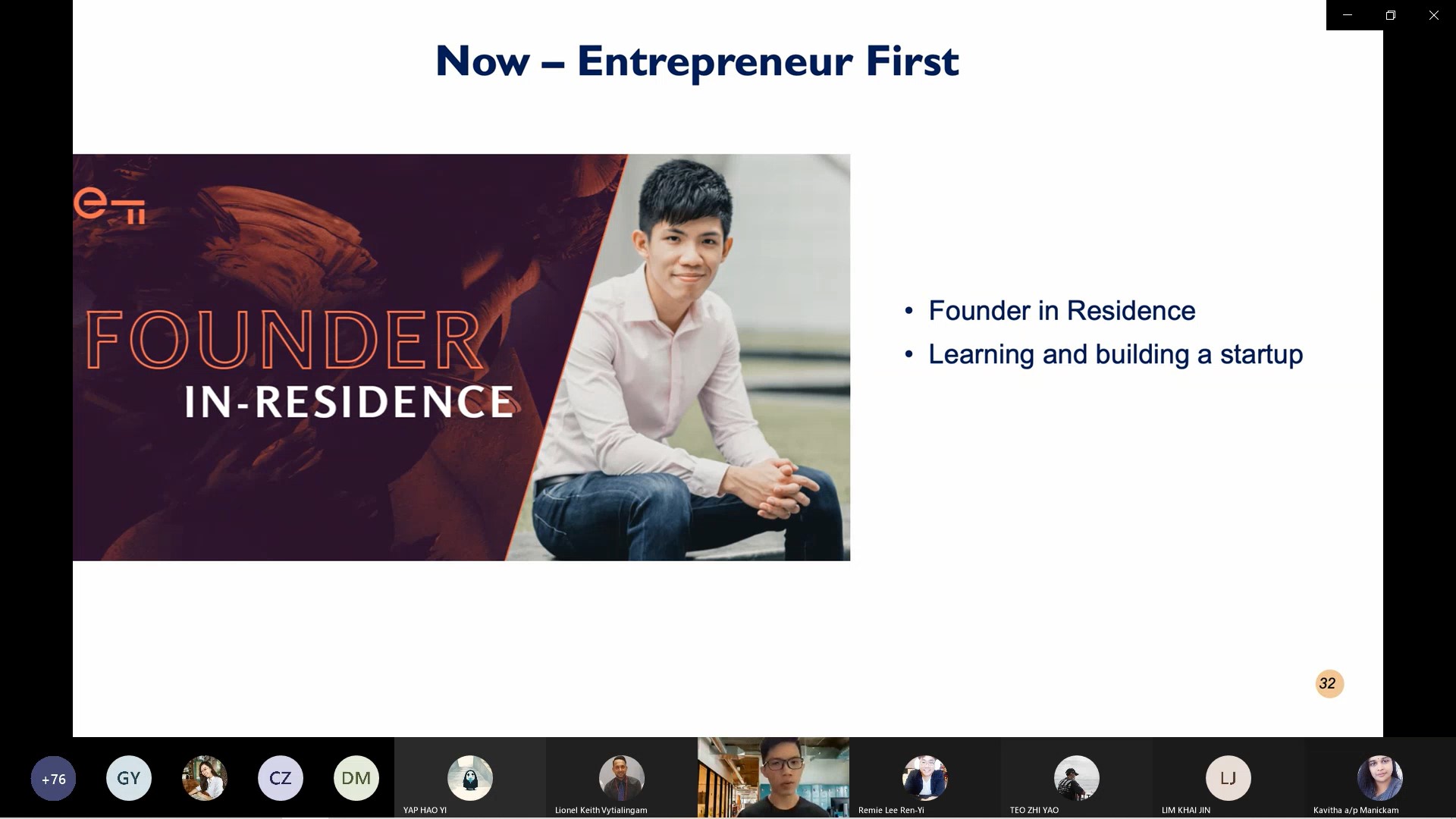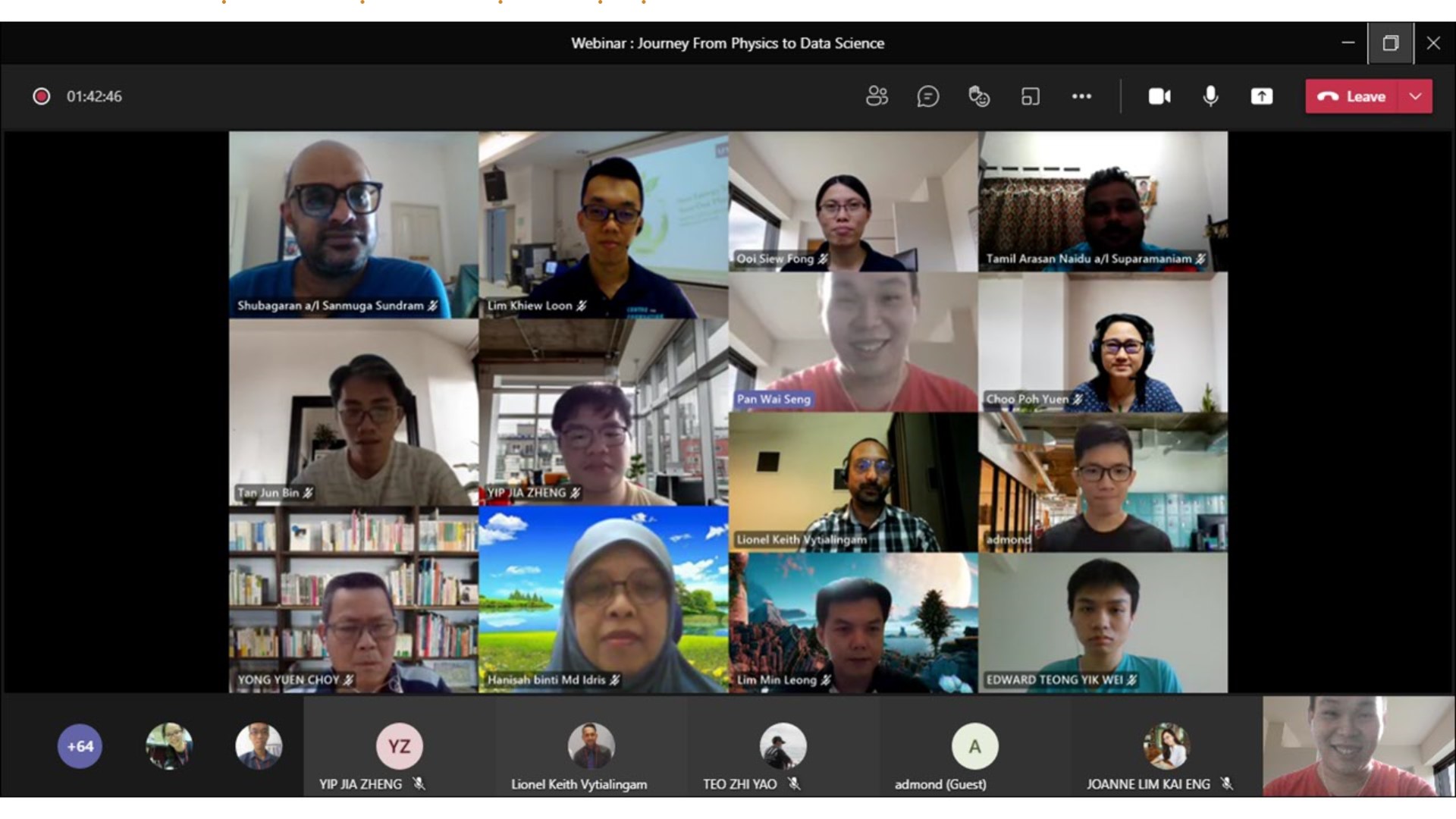The application of data science in the working industry
The Centre for Foundation Studies (CFS) of Kampar Campus organised a webinar titled “Journey from Physics to Data Science” on 14 July 2021 via Microsoft Teams. The webinar was part of CFS students’ development initiatives. It was moderated by CFS lecturer Lionel Keith Vytialingam.
The talk was delivered by Founder in Residence under Entrepreneur First (EFSG10) Admond Lee Kin Lim. He collaborated with people who participated in the programme as entrepreneurs to learn and build a start-up based on data science background by developing various websites and dashboards for potential customers. Lee graduated from Nanyang Technological University (NTU), Singapore. He initially majored in physics course, but later changed to data science after participating in an overseas internship programme at CERN, Switzerland.
The webinar aimed to provide insights into data science and its applications. It also aimed to highlight the importance of data science programming in the business industry as well as for the country’s development.
In his talk, Lee shared his experience of transitioning from physics to data science. He became passionate to explore about machine learning when he started interning at CERN, Switzerland for a summer student programme. In order to gain more practical experience on data science, he participated as an intern in technology companies such as Singapore Mass Rapid Transit (SMRT) and Quantum Inventions.
Lee said, “The data science is a much sought-after field these days as it provides invaluable comprehensions to companies in solving problems. Besides, data science is applied when consumers are targeted or recommended to specific products or advertisements of their interest based on their activities on the internet.”
Furthermore, Lee stated that he gained new knowledge skills from online learning platforms such as Udemy and LinkedIn. Lee elucidated, “I feel LinkedIn is the best social platform for the interest users to acquire more about the current trends and updates of data science. After being in a long and adventurous journey in this field as intern, I was able to start my first career as a research engineer in Titansoft. From there, I further enhanced my career by joining Micron as a data scientist in smart manufacturing and artificial intelligence (AI) department. I also worked as a data science instructor to increase the public’s awareness of the vast potential of data science in education. The reason why I enjoyed this work is because the workflow was not static and stagnant. Since this field is huge, I can keep learning the fundamentals of data science in different industries to improve my knowledge and career skills.”
The speaker continued the session by elaborating the workflow of a data scientist. According to him, the workflow of a data scientist includes identifying a problem, collecting and visualising the data, organising the data, developing a prototype, and testing a model. After the steps are implemented, the finalised model will be deployed for real-world application. In addition, Lee also shared two most handy tools in data science management, namely Python (for language programming) and Structured Query Language (for data acquisition).
CFS lecturer Shubagaran Sanmuga Sundram said, “This webinar will help increase the participants understanding towards data science profession. Moreover, the participants will be familiar on Data Science key elements such as business understanding, data acquisition and understanding, modelling, deployment and customer acceptance reflecting.”
The insightful webinar received an excellent feedback from the participants as it enlightened them on the real prospects of data scientists’ works and experiences. It ended with interactive Q&A and group photography sessions.
This webinar is associated with SDG 4— Quality Education, as it provides insightful knowledge related to data science and promotes lifelong learning opportunities to participants.


Lee sharing his experience about working journey and data science current trends


The group photograph at the end of webinar

